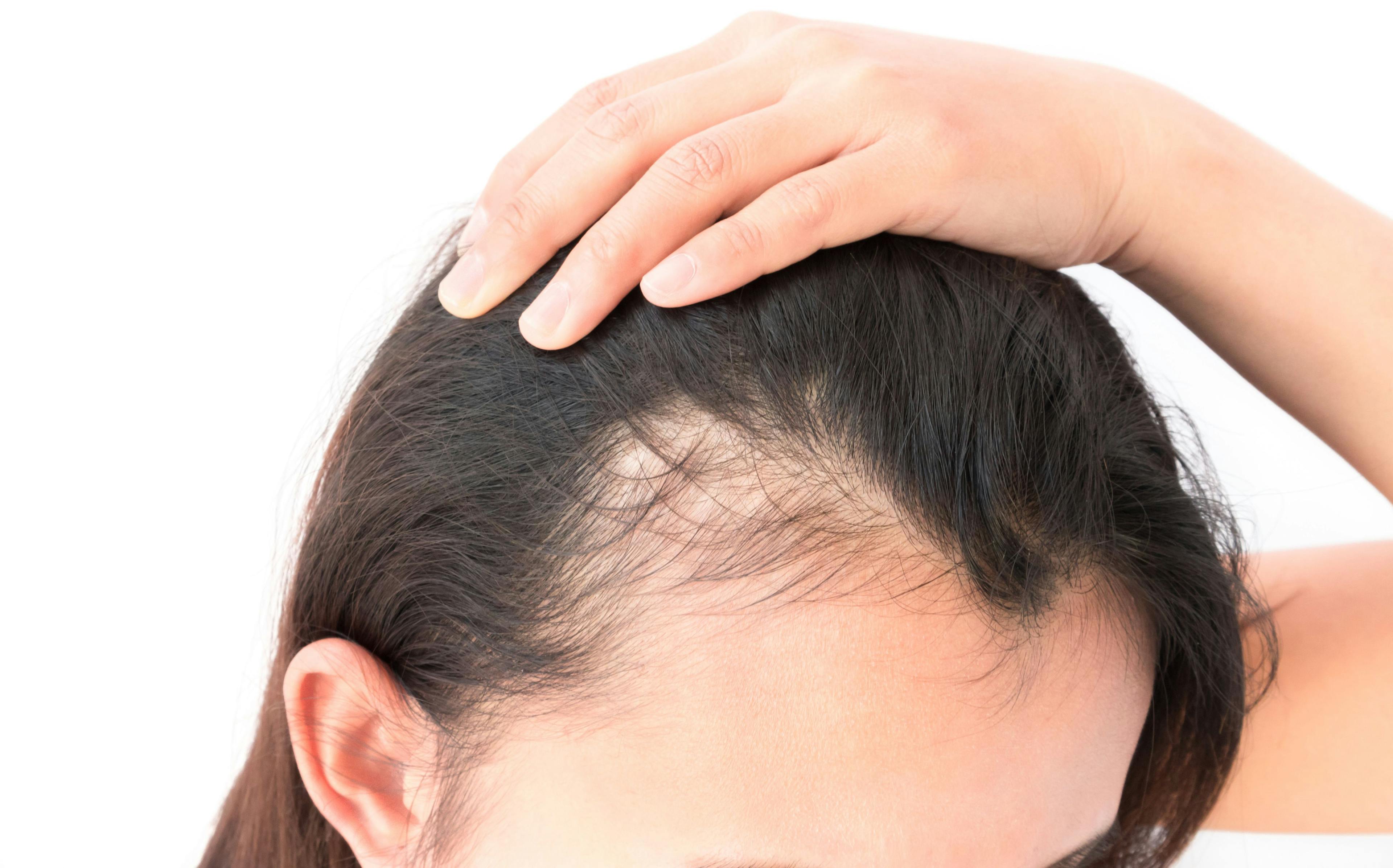- Acne
- Actinic Keratosis
- Aesthetics
- Alopecia
- Atopic Dermatitis
- Buy-and-Bill
- COVID-19
- Case-Based Roundtable
- Chronic Hand Eczema
- Chronic Spontaneous Urticaria
- Drug Watch
- Eczema
- General Dermatology
- Hidradenitis Suppurativa
- Melasma
- NP and PA
- Pediatric Dermatology
- Pigmentary Disorders
- Practice Management
- Precision Medicine and Biologics
- Prurigo Nodularis
- Psoriasis
- Psoriatic Arthritis
- Rare Disease
- Rosacea
- Skin Cancer
- Vitiligo
- Wound Care
Publication
Article
Aesthetic Authority
Rare Cryolipolysis Complications
Author(s):
When used incorrectly or inaccurately, cryolipolysis can, in rare cases, result in SAEs including dysesthesia, pain, paradoxical adipose hyperplasia, skin blanching, vasovagal reactions, skin hyperpigmentation, contour irregularities, and nerve injuries.
Most reported adverse events (AEs) associated with cryolipolysis (CoolSculpting; Allergan) treatment are minimal and transient. But there are a handful of potentially serious complications from the popular noninvasive body contouring option.
The most common and relatively mild AEs of erythema, numbness/paresthesia, bruising, and edema are to be expected from a technology that freezes subcutaneous adipose tissue, according to Bobak Hedayati, MD, dermatology resident at University of California (UC) Irvine and first author of a systematic literature review of cryolipolysis-associated AEs published last year in Dermatologic Surgery.1
In the review, the less-serious common AEs developed within a week of treatment and resolved spontaneously, according to the authors.
“The meat of our study was to look for those uncommon or rare complications that are possible,” Hedayati says.

In their review of 53 articles and a total 3,312 cryolipolysis patients, Hedayati and colleagues found the more serious AEs (SAEs) associated with cryolipolysis were: dysesthesia—including increased sensitivity, tingling or burning in 59 patients—delayed, severe, or persistent pain in 49; paradoxical adipose hyperplasia in 30; skin blanching in 15; vasovagal reactions in 14; skin hyperpigmentation in 8; and contour irregularities in 3 patients. Nerve injuries also occurred in some patients.
A Closer Look: Paradoxical Adipose Hyperplasia
Less than 1% of cryolipolysis patients develop paradoxical fat hyperplasia, an unexpected increase in the number of fat cells, according to the American Society of Plastic Surgeons website.2
Paradoxical fat hyperplasia is three times more common in men than in women and is seen more in those of Hispanic or Latino descent, according to the American Society of Plastic Surgeons.
“This is a serious complication in the sense that it does not go away on its own,” Hedayati says. “It is a benign tumor of the fat cells. All the cases in our review had to be treated with liposuction.”
There is evidence that some patients with paradoxical adipose hyperplasia resolve without treatment, according to a 2018 paper published in Aesthetic Surgery Journal.3 Investigators studied 398 patients who each had a session of cryolipolysis, 4 of which presented with voluminous painless swelling in the treated area between 2- and 4-months posttreatment. While 1 patient was treated with liposuction, the other 3 did not receive any additional treatment and their symptoms stabilized after several months, according to the authors
In a multicenter review4 of nearly 8,700 cycles of cryolipolysis in 2,114 patients, investigators reported paradoxical adipose hyperplasia incidence rates of 0.05% to 0.39%. However, incidence rates fell by more than 75% with new CoolSculpting units, according to the 2021 paper.
However, earlier this year in the European Journal of Plastic Surgery,5 Italian investigators reported that transitioning from the CoolSculpting CoolCore system to the CoolAdvantage applicator system had no impact on safety but led to greater versatility and increased numbers of cycles per treatment.
“There were only 2 significant complications: 1 paradoxical adipose hyperplasia (with CoolCore) and one loss of sensation (with CoolAdvantage),” the authors wrote.
Some suggest paradoxical adipose hyperplasia can result from improper use of the device—not freezing an area long enough or not latching on well enough to the treatment site to achieve adipose tissue apoptosis, according to Hedayati.
Nerve Injuries
Nerve injuries post-cryolipolysis are also more likely to occur with improper or inappropriate use of the CoolSculpting device, says study author Margit Juhász, MD, MSc, a dermatology resident at UC Irvine.
“It’s very rare to have nerve pain or numbness that lasts for more than a week after cryolipolysis,” Juhász says.

Rare findings of neuropathy in the Dermatologic Surgery1study included a case where a patient treated with CoolSculpting on the upper arm developed a radial nerve injury leading to weakness in the wrist and finger extension. The patient’s motor function was restored 6 months later with no additional treatment.
One possible reason for the complication, according to Hedayati, was the patient was thin and might not have had enough adipose tissue on the arm to indicate cryolipolysis.
“The radial nerve runs pretty superficially to the skin, so a skinnier person may have a higher risk of damaging those superficial nerves,” she says.
Additional complications written in the review included separate patients reporting left mandibular nerve injury, throat swelling, and hoarseness after submentum cryolipolysis.
Skin Complications
Post-inflammatory hyperpigmentation from cryolipolysis occurred from 2 days to 3 months after treatment and resolved in 7 of the 8 patients within a year. There was 1 report of unresolved skin hyperpigmentation that lasted more than a year and was treated with nonablative laser therapy, according to the review.
There was an additional complication reported in the literature, Hedayati says, that did not make it into the review. It was a case of cryolipolysis-induced morphea in a 67-year-old woman from a single CoolSculpting session. Six weeks later, she had multiple firm, thickened sclerotic plaques on her lower abdomen and inner thigh, according to the Journal of the American Academy of Dermatology case report.6
“The patient's lesions subsequently spread to her bilateral labia majora, causing severe ongoing pain and allodynia,” the authors wrote. “She was treated with a tapered course of prednisone (40 mg/d; dose decreased by half every 2 weeks), 20 mg once weekly of methotrexate, and 1 mg daily of folic acid. Her topical regimen was amended as follows: tacrolimus 0.1% ointment (Protopic; LEO Pharma INC) twice daily during the week and halobetasol propionate 0.05% ointment (Ultravate) twice daily on the weekends. Over 3 months, she had significant clinical improvement; her lesions resolved with hyperpigmentation, and she had a subsequent decrease in pain.”
In Perspective
Cryolipolysis is safe when performed by a health care professional who is experienced and well-trained in its use, according to Hedayati.
Recent statistics suggest CoolSculpting is increasing in popularity. Noninvasive fat reduction—including Coolsculpting, Liposonix, Emsculpt, Vanquish, and Zerona—was the eleventh most popular minimally invasive cosmetic procedure in 2020, with nearly 358,000 performed, according to the 2020 Plastic Surgery Statistics Report by the American Society of Plastic Surgeons.7
In many cases, even the more serious AEs tend to resolve on their own, Hedayati says.
“If you compare cryolipolysis to liposuction, which is a more invasive version of adipose tissue removal, the side effect profile of cryolipolysis is much better,” Juhász said. “Death has been reported with liposuction but not with cryolipolysis. With advancing technology in cryolipolysis, I think that we are probably going to see less of the erythema, transient pain, and temporary nerve deficits associated with treatment. But I don’t think side effects will ever totally go away, no matter how advanced the machinery gets.”
References:
- Hedayati B, Juhász M, Chu S, Mesinkovska NA. Adverse events associated with cryolipolysis: A systematic review of the literature. Dermatol Surg. 2020;46 Suppl 1:S8-S13. doi:10.1097/DSS.0000000000002524
- Nonsurgical fat reduction. American Society of Plastic Surgeons. Accessed August 9, 2021. https://www.plasticsurgery.org/cosmetic-procedures/nonsurgical-fat-reduction/cryolipolysis
- Stroumza N, Gauthier N, Senet P, et al. Paradoxical adipose hypertrophy (Pah) after cryolipolysis. Aesthetic Surgery Journal. 2018;38(4):411-417. https://pubmed.ncbi.nlm.nih.gov/29145587/
- Nikolis A, Enright KM. A multicenter evaluation of paradoxical adipose hyperplasia following cryolipolysis for fat reduction and body contouring: a review of 8658 cycles in 2114 patients. Aesthetic Surgery Journal. 2021;41(8):932-941. https://www.ncbi.nlm.nih.gov/pmc/articles/PMC8279305/
- Gualdi A, Gatti J, Bertossi D, et al. Evolution of the treatment approach to cryolipolysis using the CoolAdvantage applicator family: results from a retrospective database review. Eur J Plast Surg. Published online February 13, 2021. https://link.springer.com/article/10.1007/s00238-021-01789-2
- Ladha M, Poelman S. Cryolipolysis-induced morphea. JAAD Case Reports. 2019;5(4):300-302. https://www.jaadcasereports.org/article/S2352-5126(19)30023-2/fulltext
- Plastic Surgery Statistics Report. American Society of Plastic Surgeons. Accessed August 9, 2021. https://www.plasticsurgery.org/documents/News/Statistics/2020/plastic-surgery-statistics-full-report-2020.pdf

Newsletter
Like what you’re reading? Subscribe to Dermatology Times for weekly updates on therapies, innovations, and real-world practice tips.























